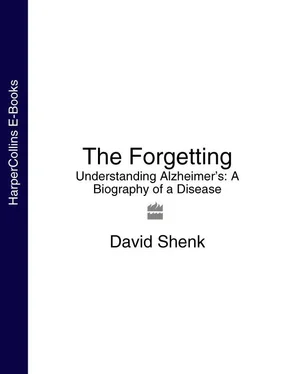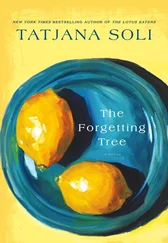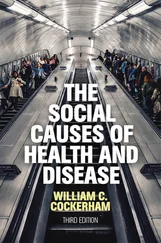Time stopped for H.M. in 1953. For the rest of his long life, he was never again able to learn a new name or face, or to remember a single new fact or thought. Many doctors, researchers, and caregivers got to know him quite well in the years that followed, but they were still forced to introduce themselves to him every time they entered his room. As far as H.M. was concerned, he was always a twenty-five-year-old man who was consulting a doctor about his epilepsy (he had also lost all memory of the two years immediately prior to the surgery). H.M. became perhaps the most important neurological subject in history and was subject to a vast number of studies, but he remembered none of the experiments once they were out of his immediate concentration. He was always in the Now.
In the clinical lexicon, this was a perfect case of anterograde amnesia , the inability to store any new memories. Persons with incipient Alzheimer’s disease exhibit a slightly less severe form of the same problem. The memory of leaving the car keys in the bathroom isn’t so much lost as it was never actually formed .
In a healthy brain, sensory input is converted into memory in three basic stages. Before the input even reaches consciousness, it is held for a fraction of a second in an immediate storage system called a sensory buffer .
Moments later, as the perception is given conscious attention, it passes into another very temporary system called short-term (working) memory . Information can survive there for seconds or minutes before dissolving away.
Some of the information stirring in working memory is captured by the mechanism that very slowly converts into a long-term memory lasting years and even a lifetime.
Long-term memories can be either episodic or semantic . Episodic memories are very personal memories of firsthand events remembered in order of occurrence. Before the baseball game the other day, I put on my new pair of sneakers, which I had gotten earlier that morning. Then we drove to the stadium. Then we parked. Then we gave the man our tickets. Then we bought some hot dogs. Then we went to our seats …
Now, days later, if I notice a mustard stain on my shoe, I can plumb my episodic memory to determine when and how it happened. If my feet start bothering me, my episodic memory will help me figure out whether it happened before or after I bought my new shoes.
Semantic memories are what we know, as opposed to what we remember doing. They are our facts about the world, stored in relation to each other and not when we learned them. The memory of Neville Chamberlain’s “peace in our time” is semantic.
They are separate systems—interrelated, but separate. An early-stage Alzheimer’s patient who cannot retain memories of where she put her keys has not forgotten what keys are for, or what kind of car she drives. That will come much, much later, when she starts to lose old semantic memories.
The experience with H.M. taught researchers that the hippocampus is key to long-term memory formation. Without that tiny organ, he was totally incapable of forming new, lasting memories. Alzheimer’s patients suffer the exact same systemic loss, but over several years rather than one surgical afternoon. For H.M., there were no new memories after 1953, period. In later years, he was unable to recognize his own face in the mirror. Real time had marched on, 1955 … 1962 … 1974, but as far as he was concerned, he was still twenty-five years old. If you are a young man, alert and intelligent, and you look into an ordinary mirror only to discover the face of a sixty-year-old perfectly mimicking your expressions, perhaps only then do you know the real meaning of the word horror . Fortunately, the extreme distress H.M. suffered during such world-shattering incidents was always immediately and completely forgotten as soon as his attention could be distracted by something happening in the new moment. Not remembering can sometimes be a great blessing.
The discovery of hippocampus-as-memory-consolidator was critical. What memory specialists have been trying to figure out ever since then is, once formed, where do these long-term memories actually reside? Are memories stored up in the front of the brain in the prefrontal cortex? On top, in the parietal lobe? In the brainstem at the base of the brain? Where?
One tantalizing theory emerged in the late 1950s: memories were everywhere, stored in discrete molecules scattered throughout the brain. A stampede to confirm this notion was set off by a 1962 Journal of Neuropsychiatry article, “Memory Transfer Through Cannibalism in Planaria,” in which the University of Michigan’s James McConnell eagerly reported that worms could capture specific memories of other worms simply by eating those worms. McConnell had trained a group of flatworms to respond to light in a noninstinctive way. He then killed these worms, chopped them up, and fed them to untrained flatworms. After eating their brethren, McConnell claimed, the untrained worms proceeded to behave as though they had been trained—they had somehow acquired the memory of the trained worms. It was the unexpected apotheosis of the old saying, “You are what you eat.”
Out of this report numerous research grants were born, some of which yielded tantalizing results. Three years after McConnell’s initial study, four California scientists reported in the journal Science that when cells extracted from the brains of trained rats were injected into the guts of untrained rats, the untrained rats picked up the learned behavior of the trained rats. These experiments apparently showed that specific, concrete individual memories were embedded as information in discrete molecules in the same way that genetic information is embedded in DNA, and that these memories were transferable from brain to brain. A later experiment by Baylor University’s Georges Ungar was the most vivid yet: Brain cells from rats that had been trained to fear the dark were transferred to untrained mice (ordinarily, neither mice nor rats fear the dark), who suddenly took on this new fear. Ungar even isolated a peptide comprising fifteen amino acids that he said contained the newly created memory. He called the transmissible fear-of-the-dark memory molecule scotophobin .
The theory that emerged out of these experiments was of memory as a distinct informational molecule that could be created organically in one brain, isolated, and then transferred to another brain—even to the brain of another species. Its implications were immense. Had this cold fusion of an idea been validated rather than widely discredited not long after Ungar’s paper was published in Nature in 1972, it is clear that ours would be a very different world today: Memory swaps. Consciousness transfers. Neurochemical behavioral enhancements that would make Prozac seem like baby aspirin. The rapid decoding of a hidden science of memory molecules might well have spawned a new type of biochemical computer that could register, react to, and even create memory molecules of its own. Laptops (or cars or stuffed animals) could be afraid of the dark or partial to jazz or concerned about child abuse. Memories and feelings could be bottled and sold as easily as perfume.
But that world did not, and cannot, emerge. The memory transfer experiments, while entertaining and even seductive—DNA pioneer Francis Crick was among the many prestigious scientists on board for a while—were ultimately dismissed as seriously misguided). The idea of transferable memories strained credulity to begin with; to suggest that one animal’s specific fear could travel through another animal’s digestive tract, enter its bloodstream, find its way to the brain, and turn itself on again in the new host mind was an even further stretch.
Читать дальше












